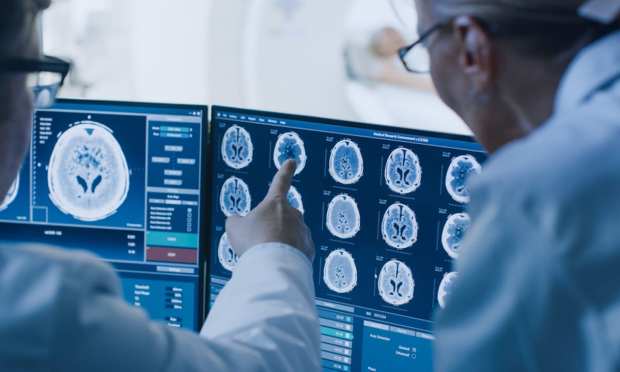HealthTech Use Case Expansions Push Boundaries, From The Mundane To The Exotic

As much as digital technology has been used to solve a lot of life’s problems over the past year or so, when it comes to the healthcare sector, the upgrades have been lagging behind the innovations seen in other industries. However, a spate of recent HealthTech headlines is challenging that stodgy status quo.
Enter Warby Parker, for example, which this week announced plans to offer upgraded eye exams via its app instead of requiring customers to see the eye doctor every time their prescription expires.
As it turns out, the tiny supercomputers we all now carry are good at forging a variety of connections with a range of healthcare providers — from things as simple as eye exams to more complex iterations such as brain imaging (which, in fact, there’s also an app for).
Warby’s Eye Care Expansion
When Warby Parker launched in 2010, it was a first-of-its-kind D2C eye care provider allowing consumers to purchase prescription frames at a fraction of their usual cost at brick-and-mortar locations. Eleven years later, Warby Parker is on the verge of its IPO, facing a market that is more crowded and competitive, as other D2C eyewear players like Zenni have sprung up on top of the incumbent traditional players like Lenscrafters, which still dominates the market.
Warby is expanding its offering with a new prescription renewal service via a new app called Virtual Vision Test, which allows wearers of both prescription frames and contact lenses to take an at-home vision test on a mobile device and digitally renew the prescription, no eye doctor visit necessary.
The short exam places users 10 feet from the screen and asks them to read a displayed letter. The user covers one eye, reads the letter backwards and then repeats the process with the other eye. The app records spoken responses and uploads them to Warby Parker’s servers, where a doctor can review them. It also asks a few questions to look for red flags that might indicate larger eye health issues.
In the last step, consumers send an image of their current (or newly expired) prescription, and within two days, a licensed ophthalmologist will review the results and either move ahead with the prescription renewal or recommend an additional in-person examination.
Opinions on the service are a bit divided: Kathryn Richdale, vision science researcher at the University of Houston’s College of Optometry, told Wired that the procedure is comparable to a patient seeing a dentist to get their mouth X-rayed for cavities while neglecting the teeth cleaning or gum care part of the exam.
“You’re taking the risk for yourself to say, ‘I think I’m fine.’ You don’t know for sure if you’re fine unless you actually have a comprehensive exam,” Richdale noted.
But proponents like Jorge Cuadros, a clinical telehealth researcher at UC Berkeley’s School of Optometry, note that the service is not really competing with full eye exams so much as it is competing with consumers who don’t schedule an exam when their script expires due to time constraints. The online option will encourage them to keep up with their prescription needs, he noted.
Building ‘Google Maps For The Brain’ With AI
Making a map of the human brain isn’t easy work, as it is the most complex human organ. In fact, as recently as the early 2000s, neuroscientists and surgeons say that fully detailed photographs of the brain weren’t even available.
“I didn’t want to hurt people when we did brain surgery. I couldn’t see where really important things in the brain were,” said surgeon Michael Sughrue in an interview.
It was a problem that motivated him to cofound Omniscient Neurotechnology with partner Stephane Doyen to create neuronal brain maps, tapping the power of artificial intelligence (AI) to improve patient care. As of this week, the three-year-old firm announced it had completed a $30 million Series B financing round, pushing its valuation to $295 million.
According to the firm, its maps are designed to help doctors spot abnormal connections, the misfiring of neurons and other neurodegenerative conditions without actually having to crack open any skulls. “It gives us the ability to look into someone’s brain, figure out what’s firing incorrectly and edit it,” Sughrue noted.
The connectome, which is the technology that is used to map neuronal connections in the brain, was created by using machine learning algorithms to analyze tens of thousands of MRI scans, creating something the firm refers to as the “Google Maps of the brain.” While it isn’t the first firm in this field, it is perhaps the first to commercialize it to sell directly to healthcare systems worldwide. And its ambitions are notably bigger than simply building the Google Maps of the brain: its dream is to open up the ecosystem and build an entire operating system of brain data.
The Smartphone’s Wound Monitoring Potential
Wound care has a reputation in the industry for being a quiet killer, as damage and illness often stay under the radar until they’ve compounded enough that issues have escalated to a critical care condition. “It’s this hidden crisis. Quite honestly, those who are outside of healthcare never really hear about it,” Swift Co-founder Carlo Perez noted in an interview.
To tackle the problem, Swift Medical is turning to an app-based technology that was developed to use a smartphone’s camera to come up with a 3-D model of a wound. That data can then be used to collectively interpret if (and how fast) the wound is healing. The app’s purpose, according to reports, is to make wound care and triage easier for medical professionals, particularly in home care situations.
Read More On Healthcare:
- Real-Time Payments Help Cure Small Business Healthcare Provider Finances
- UnitedHealth Group Shutting Down Optum Virtual Care Telehealth Business
- 78% of High-Income Women Spend Money on Their Own Medical Care
- Robots Redefine Surgical Landscape for Enhanced Patient Outcomes